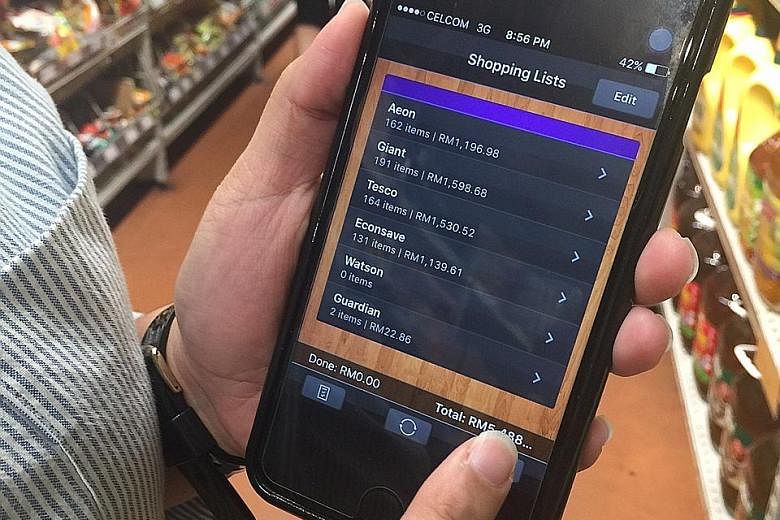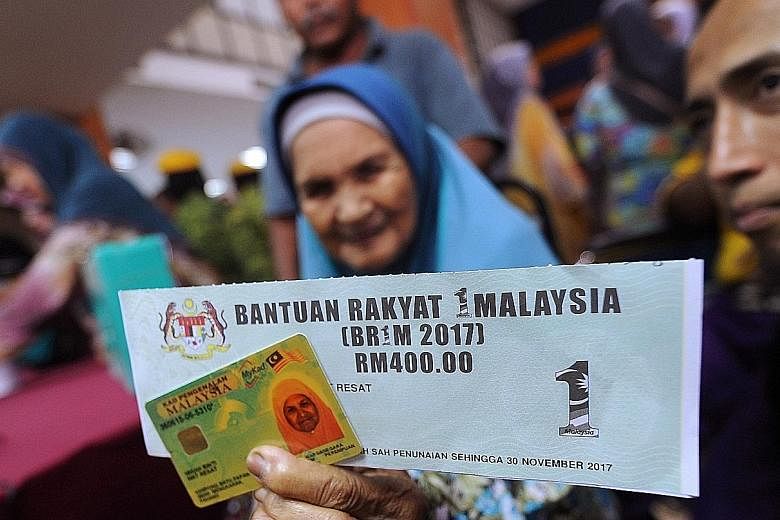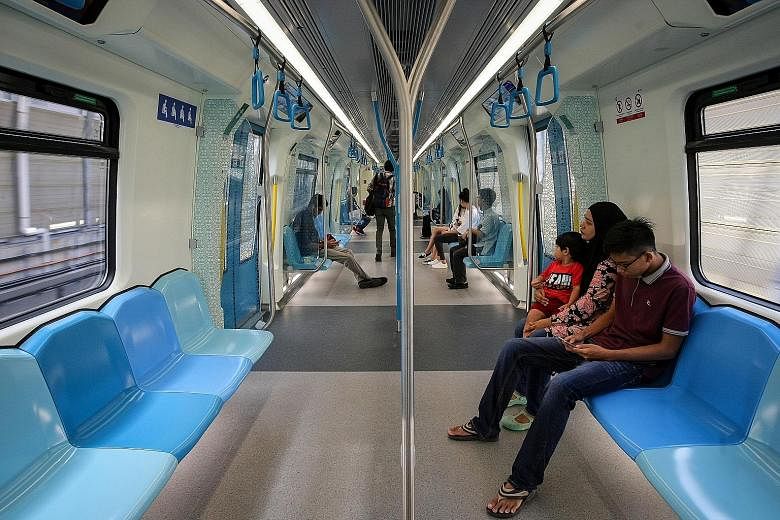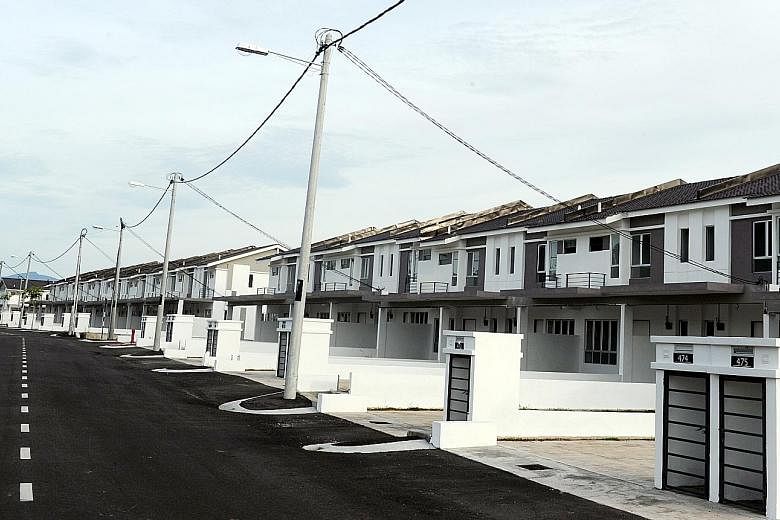Malaysia's middle class has long aspired to fancy foreign cars and detached houses but with surging inflation, some, like public relations officer Natasja Ali, have been forced to forgo even life's simpler pleasures.
"Enjoying a glass of Milo - it has become a luxury to me. Instead of four scoops, I've cut down to two," she said of the ubiquitous chocolate drink, whose price this year shot up to RM35.90 (S$11.58) for a 2kg pack from RM27.90.
Keeping mouths fed is no longer a struggle just for the poor. Middle- income households are also being forced to count every ringgit.
Inflation, as measured by the consumer price index (CPI), has been about 2.5 per cent per annum in the last seven years. But look closer, and the figures show that the food and non-alcoholic beverage portion of the CPI has risen 44 per cent faster than general inflation.
"Some people think RM6,200 (take-home pay) is a lot. But the truth is, without actively looking out for deals and promotions, I doubt I could still put aside some savings," said Ms Natasja, 31, a mother of three.
The hard times mean lower quality of life for middle-income families - defined by the government as households with the 41st to 80th percentile of incomes (or, Middle 40) - who earn between RM3,860 and RM8,319 monthly.
Among them is salesman James Lim, 45, who had to cancel his family's annual trip abroad this year and will likely have to enrol his 16-year-old daughter in a local college next year, unless they move to a smaller home. "I'm not sure if my family is ready to make that kind of sacrifice," he said, noting that an Australian degree could set him back by over RM100,000 a year in tuition fees thanks to a weak ringgit.
The middle class is not the only group that is reeling. There is the bottom rung of Malaysia's society, described by the government as the Bottom 40. These households earn below RM3,860 monthly, and face tougher financial hurdles.
Parti Keadilan Rakyat communications director Fahmi Fadzil said: "Some sole breadwinners have to cope with job losses, or quit to look after an ailing relative. There are families that cannot send their children to school because there isn't money for food or transport."
Malaysia's central bank has urged citizens to make better financial decisions, especially with high household debt. According to a 2015 Bank Negara Malaysia (BNM) survey, three out of four Malaysians are unable to raise RM1,000 in an emergency. Said BNM deputy governor Abdul Rasheed Ghaffour in April: "The majority of Malaysians have inadequate knowledge on financial matters to enable them to make informed financial decisions, particularly among the vulnerable groups."
He added that most Malaysians "focus on instant gratification at the expense of long-term financial planning".
The Credit Counselling and Debt Management Agency, which offers help with financial planning, has seen a spike in those seeking its help. From July to November last year, it counselled 55,000 Malaysians, above the annual average for the past decade.
GOVT SCHEMES TO COPE WITH RISING COSTS
The Malaysian government has a long list of schemes to help lower-income groups cope with high prices. Here are the main ones.
FINANCIAL ASSISTANCE
1MALAYSIA PEOPLE'S AID (BR1M)
Households earning below RM3,000 (S$970) a month each get RM1,200 in cash a year, given in three payments. Since BR1M started in 2012, almost RM19 billion has been disbursed. This year, 3.2 million households will get RM1,200 each, more than 291,000 are getting RM900 each, and 2.78 million individuals RM450 each.
TRANSPORT
TRAINS
The government has in recent years expanded the Mass Rapid Transit (MRT) and Light Rail Transit systems in Greater Kuala Lumpur.
HOUSING
1MALAYSIA PEOPLE'S HOUSING (PR1MA)
The scheme builds homes costing RM100,000 to RM400,000, lower than prices sold by private developers. PR1MA is targeted at first- time home owners with household income from RM2,500 to RM15,000.
PUBLIC HOUSING
Several public housing projects are available for the lower income, the most prominent being People's Housing Project (PPR).
Typically, blocks of flats are managed by the government with rents as low as RM124 and an option to buy a unit from RM30,000.
HOUSEHOLD GOODS
1MALAYSIA CITIZENS SHOP (KR1M)
These bright red shops operate like neighbourhood mini markets, with groceries sold 30 to 50 per cent lower than in private stores.
HEALTHCARE
KLINIK 1MALAYSIA
Charging a mere RM1 (31 Singapore cents) per visit - free for senior citizens - the government-run clinics provide basic healthcare needs for the urban poor.
GOVERNMENT HEALTH CLINICS
A better version of the 1Malaysia clinics, these are equipped with pre- and post-natal care, children's immunisation shots and tests to detect common diseases such as diabetes.
UPSKILLING, TRAINING SCHEME
HUMAN RESOURCES DEVELOPMENT FUND
Numerous programmes are available to upskill unemployed graduates and the poor with technical and vocational training.
1AZAM PROGRAMME
Geared for Malaysia's poorest, help is given in the form of low-skill jobs, creating small business enterprises and opportunities in agriculture. But the programme has suffered losses due to poor management.
1MALAYSIA TRAINING SCHEME (SL1M)
Targeted at unemployed graduates, it provides soft-skill training and practical training for up to a year.




